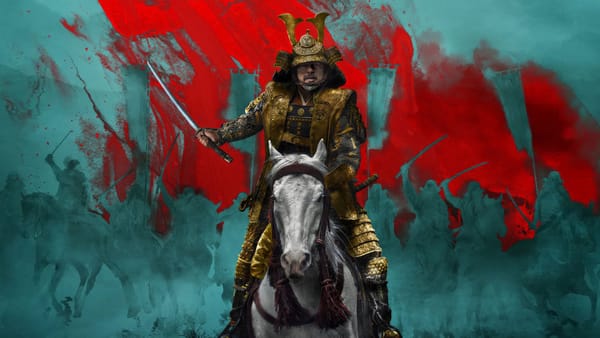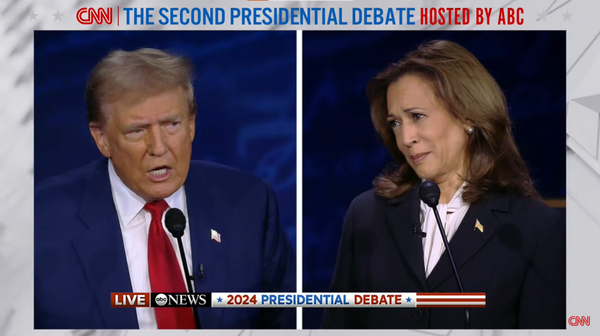Escaping the Middle-Income Trap: How the 3i Strategy Can Guide Developing Nations to High-Income Status
The World Bank’s report makes it clear that escaping the middle-income trap requires more than just economic growth

The "Middle-Income Trap" is a term that has gained increasing attention in economic discussions, especially as more countries strive to elevate themselves from middle-income to high-income status. A recent World Bank study, published in the World Development Report 2024: The Middle Income Trap, sheds light on this phenomenon, revealing that over 100 countries, including major economies like China, India, Brazil, and South Africa, are struggling with obstacles that could prevent them from reaching high-income levels in the coming decades. The report offers a comprehensive roadmap designed to help these nations overcome these hurdles and escape the so-called middle-income trap. Here is an analysis of the report and how developing countries can leverage the 3i strategy for growth.
Featured: Experience Unmatched Quality Leather iPhone Accessories with Nomad Goods – Grab Your Discount Code Today!
Unlock exclusive savings on high-quality leather iPhone and Mac accessories with a Nomad Goods coupon or discount code.
Elevate your style and protection with Nomad Goods, where quality meets affordability. Discover refined leather cases, durable straps, and premium MagSafe accessories crafted for excellence. Don’t miss out on these limited-time deals—enhance your Apple products with Nomad's superior craftsmanship today.
Visit Nomad Goods via the link below and apply your Nomad Goods discount code at checkout for incredible savings. Hurry, these offers won’t last!
We may earn a commission when you make a purchase.
What is the "Middle-Income Trap"?
The middle-income trap refers to the stagnation that countries often face when they reach a certain income level—about 10% of the annual U.S. GDP per capita, or roughly $8,000 today. This is in the middle of the range, classified by the World Bank as "middle-income." Historically, only a small fraction of countries have managed to transition from middle-income to high-income status. Since 1990, only 34 economies have made this leap, and over a third of them did so either by integrating into the European Union or discovering previously untapped oil reserves.

As of the end of 2023, 108 countries were classified as middle-income, with annual GDP per capita ranging from $1,136 to $13,845. These countries are home to six billion people—75% of the global population—and two out of every three people living in extreme poverty. Despite generating more than 40% of global GDP and contributing over 60% of carbon emissions, these countries face significant challenges that make escaping the middle-income trap more difficult than ever. Key issues include rapidly aging populations, rising protectionism in advanced economies, and the urgent need to accelerate the energy transition.

The Battle for Global Economic Prosperity
Indermit Gill, Chief Economist of the World Bank Group and Senior Vice President for Development Economics emphasizes middle-income countries' role in global economic growth. “The battle for global economic prosperity will largely be won or lost in middle-income countries,” Gill asserts.
Contrastingly, Gill also points out that many of these nations rely on outdated strategies to try to become advanced economies. “They depend just on investment for too long—or they switch prematurely to innovation. A fresh approach is needed: first focus on investment; then add an emphasis on infusion of new technologies from abroad; and, finally, adopt a three-pronged strategy that balances investment, infusion, and innovation. With growing demographic, ecological and geopolitical pressures, there is no room for error.” [Source: World Bank]

Breaking Free from Economic Stagnation: The 3i Strategy for High-Income Status
The World Bank’s report proposes a novel “3i strategy” for middle-income countries to reach high-income status. This strategy involves a phased approach that evolves with the country's stage of development:
- Investment (1i Phase): Low-income countries should initially focus on policies that encourage investment. This phase involves increasing public and private investments to build infrastructure and enhance production capabilities.
- Investment and Infusion (2i Phase): Once a country reaches lower-middle-income status, it should adopt a more sophisticated policy mix by adding "infusion" to its strategy. Infusion refers to adopting and integrating foreign technologies into the domestic economy, helping to spread these innovations across various sectors.
- Investment, Infusion, and Innovation (3i Phase): At the upper-middle-income level, countries should further evolve their strategy to include innovation. This phase is where countries move from merely adopting foreign technologies to pushing the global frontier of technology themselves. The focus is on developing homegrown innovations that can drive long-term economic growth.

How the 3i Strategy Can Transform Developing Nations into High-Income Economies: Case Studies and Lessons from Successful Economies
The report highlights South Korea as a prime example of a country that successfully navigated all three phases of the 3i strategy. In 1960, South Korea's per capita income was just $1,200. However, by the end of 2023, that figure had skyrocketed to $33,000. South Korea's journey began with a simple policy mix aimed at increasing public and private investment. In the 1970s, the country shifted to an industrial policy that encouraged domestic firms to adopt foreign technologies and more sophisticated production methods.

From Middle-Income to High-Income: The Power of the 3i Strategy
A notable example is Samsung, which started as a noodle-making company and later began manufacturing TV sets for domestic and regional markets. To achieve this, Samsung licensed technologies from Japanese companies such as Sanyo and NEC. This move spurred demand for skilled professionals, prompting the South Korean government to set targets and increase budgets for public universities to develop the necessary expertise. Today, Samsung is a global innovator, recognized as one of the world's two largest smartphone manufacturers.
Other countries have followed similar paths, adapting the 3i strategy to their specific contexts. Poland, for example, focused on raising productivity by infusing technologies from Western Europe, while Chile leveraged technology transfer from abroad to drive domestic innovation. One of Chile's biggest successes involved adapting Norwegian salmon farming technologies to local conditions, enabling the country to become a leading exporter of salmon.

Challenges Ahead: Balancing Growth and Stability
While the 3i strategy offers a potential pathway for middle-income countries to escape the middle-income trap, the road ahead is fraught with challenges. Somik V. Lall, Director of the 2024 World Development Report, notes that “The road ahead won’t be easy, but it’s possible for countries to make progress even in today’s challenging conditions. Success will depend on how well societies balance the forces of creation, preservation, and destruction. Countries that try to spare their citizenry the pains associated with reforms and openness will miss out on the gains that come from sustained growth.” [Source: World Bank]
This balance is crucial because, as countries move through the different phases of the 3i strategy, they must manage the trade-offs between fostering new industries (creation), maintaining the gains of existing industries (preservation), and allowing uncompetitive sectors to decline (destruction). The failure to manage these trade-offs effectively can result in stalled growth and increased inequality, making it even harder to transition to a high-income economy.

Insight: The Global Implications of the Middle-Income Trap
The success or failure of middle-income countries in escaping the middle-income trap has significant implications for global economic stability. With 75% of the world's population residing in these countries, their economic performance directly impacts global demand, trade, and investment flows.
Additionally, as these nations contribute over 60% of global carbon emissions, their ability to adopt and innovate in green technologies is critical to achieving global climate goals. Moreover, the report suggests that the rise of protectionism in advanced economies poses a significant risk to middle-income countries.
As these countries attempt to integrate into global value chains and attract foreign investment, restrictive trade policies in developed nations could limit their growth opportunities. Therefore, middle-income countries must not only focus on internal reforms but also navigate an increasingly complex and challenging global economic landscape.

Read on why climate action is more urgent than ever
A Call for Strategic Reforms as a Way to Escape the Middle-Income Trap
The World Bank’s report makes it clear that escaping the middle-income trap requires more than just economic growth—it demands strategic reforms that are tailored to each country's stage of development.
By adopting the 3i strategy, middle-income countries can create a roadmap for sustainable growth, leveraging investment, technology infusion, and innovation to achieve high-income status. However, as Indermit Gill warns, there is no room for error.

The global economic environment is becoming increasingly complex, and the decisions made by these countries in the coming years will determine whether they can break free from the middle-income trap or remain stuck in a cycle of stagnation.






